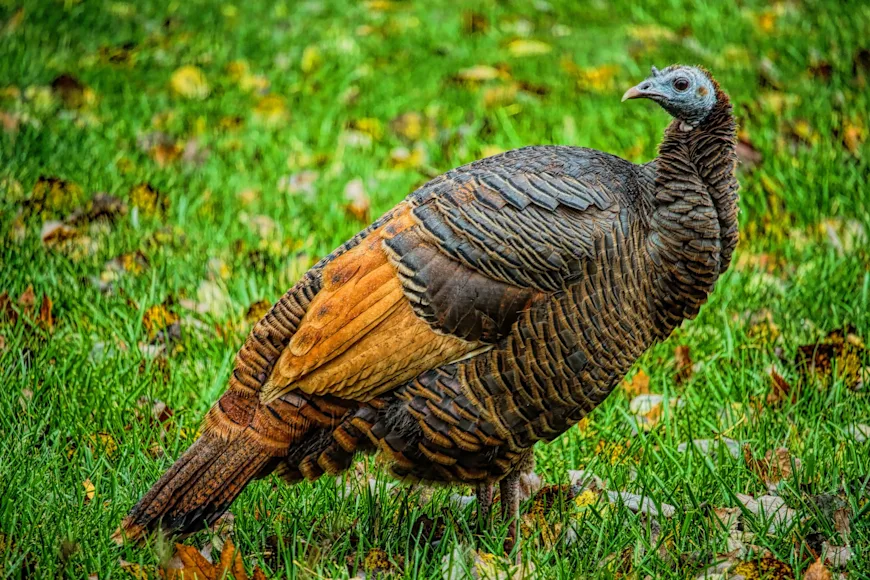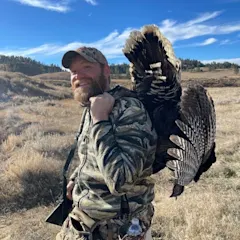The wild turkey is one of America’s favorite game birds. Saved from precipitous decline in the 1950s, '60s, and '70s, the birds now range across the entire Lower 48. While there are five subspecies in the U.S., hunters sometimes kill all-white or smokey-colored turkeys that defy standard categorization—and some that look partially domestic. Other hunter-harvested birds look like a cross between multiple subspecies. With all these variables in mind, a team of researchers has set out to shed light on the murky science of wild turkey genetics. And they need hunters to help with their efforts.
Mike Chamberlain is the lead researcher on the project. A professor of ecology at the University of Georgia Warnell School of Forestry and Natural Resources, Chamberlain has been studying wild turkeys for more than 30 years. “During the first year of the program we're focusing on turkeys that have odd-colored plumage,” Chamberlain tells Field & Stream. “Some are smoky colored or all-white or some combination thereof. We're trying to understand the origin of these characteristics.”
F&S has shared stories about many unique wild turkeys over the years, from all-white “albino” birds to what are commonly referred to as “smoke-phase” turkeys. Chamberlain says that without true genetic analysis, there’s no way to tell if such variations actually occur in the wild, or if some of these birds are inter-breeding with domestic turkeys.
“This has never been studied in turkeys,” he says. “We’ve just assumed for decades that these color phases actually exist. Are some of these birds linked back to domestic varieties, such as the heritage varieties that are very popular, or is it something else?”
Chamberlain is teaming up with the National Wild Turkey Federation (NWTF), Ducks Unlimited (DU), the University of Texas El Paso (UTEP), and the Low Country Game Bird Foundation on the project. He says it’s a natural follow-up to DU’s DuckDNA program, which analyzes hunter-killed ducks with odd plumage to learn more about waterfowl hybridization and the impacts that game-farm mallards are having on wild duck populations.
As the program progresses, Chamberlain hopes to do genetic analysis on all five of the wild turkey's distinct subspecies. "Next year we're going to take the approach that DuckDNA has taken which is to study samples from across the species' range," he says. "That should give us a broad representation across states and regions of the country—and all of the subspecies—so that we can start asking bigger questions."
One thing Chamberlain hopes to address in coming years is the genetic makeup of the various turkey subspecies in Western states. "There hasn’t been work detailing the genetic profiles of birds within individual states," he says. "In states like Idaho, for instance, there were multiple subspecies relocated, and we don’t really know what the outcome of that was. Birds in Montana are assumed to be Merriams, but are they genetically identical to other Merriams or have they hybridized?"
Read Next: Mallard DNA Test Shows Farm Genetics
Chamberlain plans to focus on all these conundrums and more after the program hones in on odd-colored plumage and color phases during its first year. If you think your spring gobbler fits the bill and would like to participate visit wildturkeydna.com to learn more about the process.


